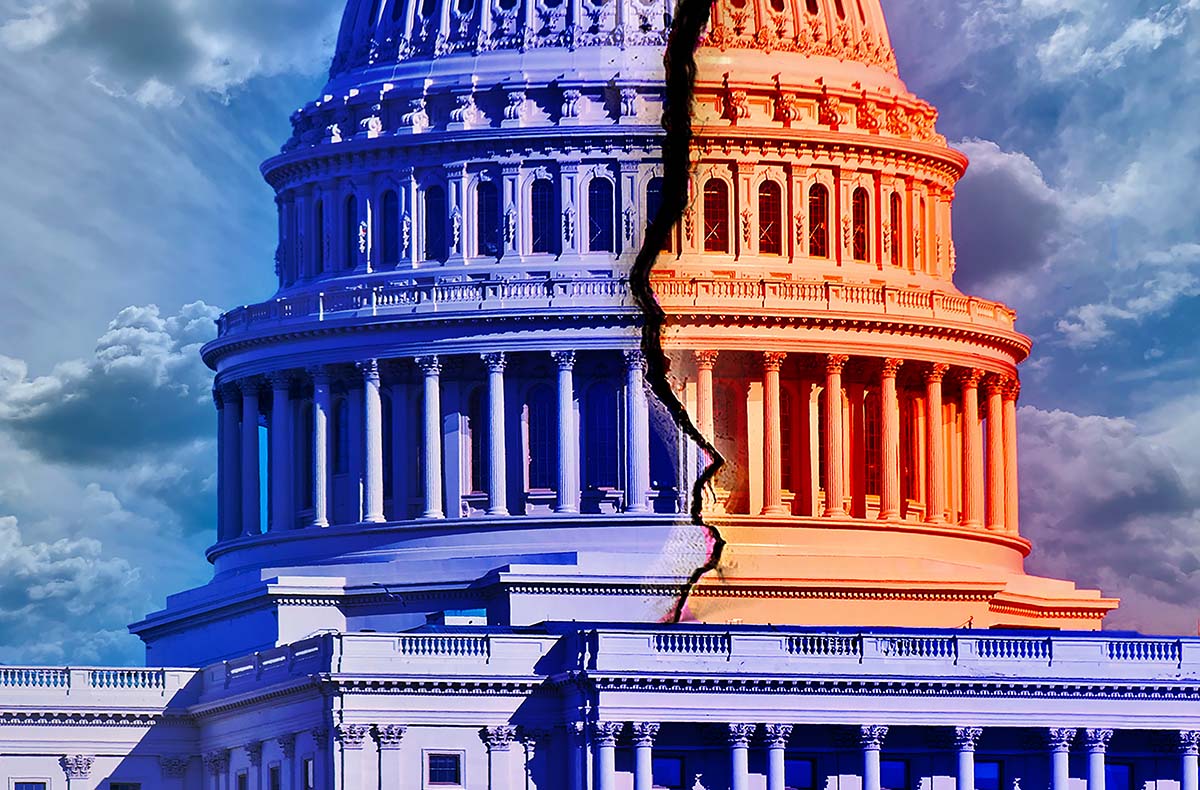
Next Tuesday’s elections in the US feature contests for every single seat in the House of Representatives and just over a third of those in the Senate, as well as various state gubernatorial races. These will provide the biggest litmus test of the Biden era to date for the country’s two major parties. In a reflection of the volatility of the current political climate and the uncertain future of the Democrats and Republicans alike, recent polling suggests that both triumph and spectacular defeat remain feasible outcomes for each party respectively.
In addition to acknowledging the long-standing expectation for the party of the sitting president to suffer some degree of electoral losses in midterm elections, there are clearly reasons for the Democrats to be afraid of losing control. Approval ratings for the Biden administration have consistently been at a net negative for over a year, and recent months have seen inflation bite especially hard—with prices rising to a four-decade high over the summer.
Considering this is in the context of a society which has had effectively stagnant wages since the 1970s, it is easy to see why a backlash against the governing party is anticipated by many.
However, there are certainly figures which Democrats can point to in order to try and rally support. Biden has strongly emphasized the significance of job growth levels since his arrival to the White House, with unemployment rates amongst the lowest the US has seen over the last 50 years. Bolder policy decisions such as student debt relief and pardoning marjuana possession—despite the reservations of more conservative elements of the party—not only provide an incentive for younger Americans to turn out and vote, but according to polling, have largely been met with indifference at worst amongst the population as a whole.
For the Republicans, the politics of the Trump era are clearly still largely hegemonic inside the party. Indeed, not a single nationwide poll with him listed as a candidate for the 2024 presidential primary shows another name defeating him. Whether his legal situation allows for another run or not, it’s clear that the agenda he represents is here to stay as a force.
This influence is clear when looking at various candidates coming up for re-election, such as Georgia representative Marjorie Taylor Greene and Florida governor Ron DeSantis. Both have more than played their part in shifting American conservatism towards even more outlandish positions, with Greene openly promoting far-right conspiracy theories, stating that she would “kick out every single Chinese in this country that is loyal to the CCP,” and claiming that the Obama administration had “opened up our borders to an invasion by Muslims.” DeSantis has used his office to block public health measures in response to COVID-19, clamp down on abortion rights, and introduce Section 28-style legislation in schools. Polling shows him as a favorite for the Republican nomination in two years time should Trump not end up on the ballot.
Cynics may suggest the success or failure of like-minded candidates in Tuesday’s elections, rather than any guiding principles, is likely to be important in determining the extent to which the party machine is happy to indulge this platform going forward.
There is a clear attempt to ensure American politics is defined by a “culture war narrative,” a more extreme version of the kind of politics deployed in Britain in recent years—limiting mainstream debate to a choice between broadly accepting the status quo or the offerings of the reactionary right. While there has sometimes been a tendency for segments of the Democratic Party to view the rise of more eccentric and outlandish Republicans as a boost to their own chances, it is not necessary to look far back to see the threat that they can pose. Aside from their impact in shifting the overall framework of debate rightwards, there is no guarantee of their failure given what can often be disillusioned and disenfranchised electorate. And, as we saw last January, a significant faction are not prepared to see their ambitions limited by electoral defeat.
Seeing past this deliberately blinkered spectrum is key to the future of the American left. Building on the legacy of campaigns from Bernie Sanders and other progressive candidates, the choice cannot be allowed to be presented as either offering genuine economic change or standing up for rights threatened by frenzied conservatives—any serious approach needs to emphasize that the two go hand in hand.
As difficult as it can be for this kind of message to break through in the US, there is evidence to suggest that there is a significant potential audience for it. Polls have found that 87% of Americans consider a candidate’s proposals to tackle healthcare costs to be an important factor in how they vote, 69% oppose continuing arms sales to Saudi Arabia, and 71% hold a favorable view of trade unions—the highest proportion for 57 years.
The issue which shows why a program of positive change is particularly urgently needed is also one that can be key in winning support for it: the threat posed by climate change. The Green New Deal initiative, an important plank of recent progressive electoral campaigns, offers an opportunity to both take action to defend the environment and boost the living standards of millions of citizens (encompassing a wide variety of backgrounds and from across the country) who have all too often been treated as an afterthought. Whilst aspects of what should be included in any such measure will naturally be contested, the basic concept enjoys broad public support, cutting across the often-cited generational opinion gap.
The outcome of these midterm results will be significant both in terms of issues impacting the lives of millions in the here and now and setting the tone for political discourse in the period ahead. But whatever the results, the need for campaigns based on hope, peace and unity will be stronger than ever—and given the influence of the US in much of the world, those invested in their success will extend far beyond American borders.



